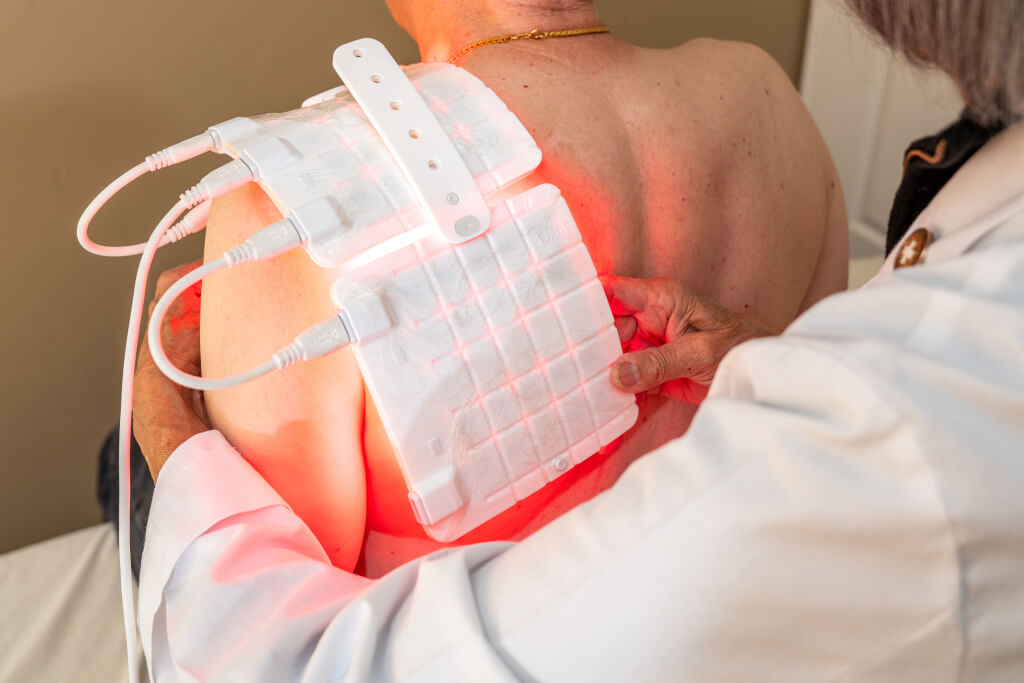At BIOLight Therapy, we are committed to advancing healthcare solutions. Embrace the transformative potential of light therapy—experience healing in our office.
Chronic Disorders
Chronic Disorders
Make Your Chronic Disorder a Thing of the Past
We treat a wide range of chronic conditions. Whether it’s the persistent symptoms of long Covid, the often-overlooked challenges of Mold Toxicity symptoms, the complexities of neurological disorders, the life-altering impact of organ disfunction, or the discomfort of gastrointestinal disorders, we have consistently helped individuals return to a healthier more balanced life.
Our innovative and personalized treatments are tailored to each patient, addressing the unique aspects of their condition and health goals. Our FDA approved medical device is designed to treat complex chronic disorders. Our commitment to holistic care and in coordination with holistic providers, we are leading the way in transforming lives and offering hope to those grappling with chronic health challenges. Join us in experiencing a new era of healthcare, where success stories are not just a possibility but a reality.
Potential Benefits for Chronic Disorders

Light therapy, particularly in the form of red or near-infrared light therapy, has shown potential benefits by relieving the symptoms of chronic disorders. While research is ongoing, and not all findings are conclusive, here is a list of chronic disorders and how light therapy may potentially offer therapeutic effects:
1. Chronic Pain
Red and near-infrared light may help reduce inflammation, improve blood flow, and stimulate cellular activity, providing relief for certain types of chronic pain, such as arthritis, fibromyalgia, and musculoskeletal pain.
2. Long COVID
Light therapy has shown promise in managing symptoms associated with long COVID, which involves various systemic symptoms and inflammation that persist even after the acute phase of the illness.
3. Mold Toxicity
Treatment for mold toxicity usually involves multiple approaches and Light therapy has shown promise in reducing inflammation, decreasing immune responses and promoting tissue repair.
4. Depression
Light therapy, especially using bright light in the morning, can influence neurotransmitters like serotonin and melatonin, potentially alleviating symptoms of depression. It's often used as a complementary approach.
5. Traumatic Brain Injury (TBI)
Light therapy may have neuroprotective effects and promote cellular repair, potentially aiding in the recovery process after a traumatic brain injury.
6. Parkinson's Disease
Preliminary research suggests that light therapy may have positive effects on motor function and sleep disturbances in individuals with Parkinson's disease.
7. Alzheimer's Disease & Dementia
Light therapy has been explored as a potential intervention for individuals with Alzheimer's disease and dementia. It may help regulate circadian rhythms, improve sleep, and provide neuroprotective effects.
8. Migraines & Headaches
Some individuals with migraines or chronic headaches may find relief through light therapy. It can help reduce the frequency and intensity of headaches, possibly by modulating pain pathways.
9. Fibromyalgia
Light therapy may be beneficial for individuals with fibromyalgia by reducing pain sensitivity, improving sleep quality, and alleviating symptoms associated with this chronic pain condition.
10. Wound Healing
Light therapy, particularly near-infrared light, has been used to promote wound healing by enhancing cellular regeneration and circulation.
11. Sleep Disorders
By regulating circadian rhythms and melatonin production, light therapy can be used to manage certain sleep disorders, including insomnia and delayed sleep phase syndrome.
While light therapy shows promise, it is not a one-size-fits-all solution, and its effectiveness can vary among individuals. Before incorporating light therapy into a treatment plan, we recommend that you consult with your healthcare professionals to ensure its appropriateness for their specific condition.


